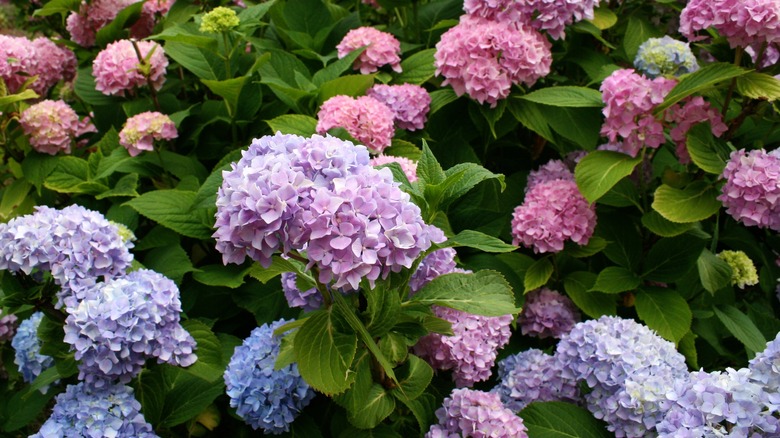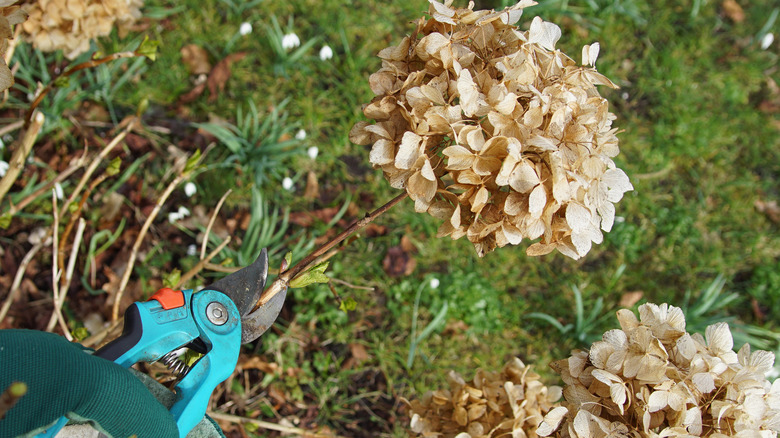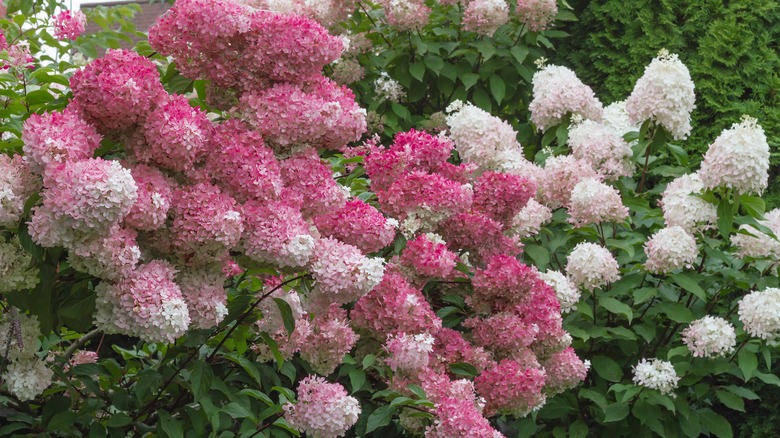How And When To Deadhead Hydrangeas
If your hydrangeas have lost their gorgeous color and plump, lovely shape, it might be time to say goodbye to the withering blooms. Deadheading, which is simply removing dead flowers from a plant, is a simple and effective technique that can significantly impact the growth, appearance, and lifespan of hydrangeas. Not only does it help promote healthy growth, but it can also prolong the blooming period.
When done correctly, deadheading is a way to take care of hydrangeas that won't damage the plants and offers multiple benefits. For instance, it improves the plant's overall appearance by removing unattractive spent blooms. Deadheading also prompts the plant to turn its attention away from producing seeds, instead encouraging flower, leaf, and root development. This results in a fuller, more vibrant display of blooms and hardier plants.
Deadheading is a simple and effective way to improve the appearance and health of your hydrangeas, but it is vital to know how and when to do so.
How to deadhead hydrangeas
Deadheading hydrangeas should not be confused with pruning the shrubs. Both deadheading and pruning are important for the health and appearance of your hydrangeas, but they are two distinct tasks that require different techniques and timing. While pruning cuts back the plant's stems and controls its shape and size, deadheading is only the removal of spent blooms.
Before you begin, it's a good idea to sterilize your pruning shears to avoid inadvertently spreading disease to the plant. You can do so by wiping or spraying the shears with 70 to 100% isopropyl alcohol.
To deadhead a hydrangea, all you need to do is locate the old blooms. These flowers are usually faded and brown and feel crisp to the touch. Follow the stem down to the first set of healthy leaves, and make a clean cut just above them using sharp pruning shears. Be sure to dispose of the spent blooms and clean up any debris around the plant.
When to deadhead hydrangeas
The timing for deadheading hydrangeas depends on the type of plant you have. For instance, some hydrangea varieties fare better when left alone. For example, The Old Farmer's Almanac says that mophead hydrangeas should be left alone until springtime and only cut back when the first buds appear. Mopheads are the most popular bigleaf hydrangea with large, round purple, blue, or pink blooms.
You can safely remove spent flowers for other hydrangeas, including mountain, smooth, panicle, and lacecaps. Take time to deadhead these shrubs as the blooms blossom and fade until mid to late fall to encourage lush, healthy foliage and flowers.
Deadheading hydrangeas can promote healthy growth and blooms. However, before deadheading, it's crucial to identify the type of hydrangea you have. If you're uncertain, you can consult a gardening guide or ask a local horticulturist. Once you know the variety of your gorgeous plant, you can deadhead it at the appropriate time.


